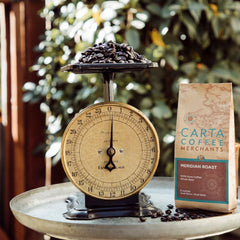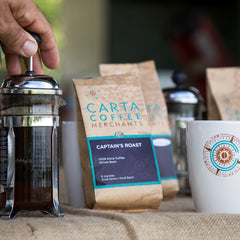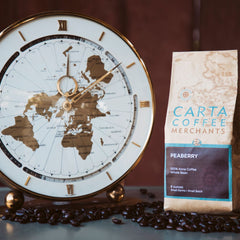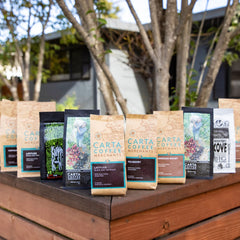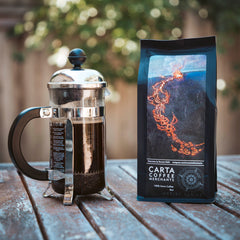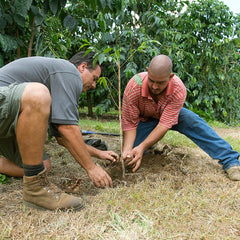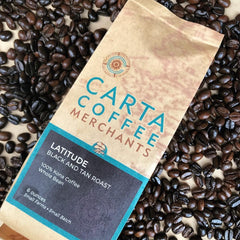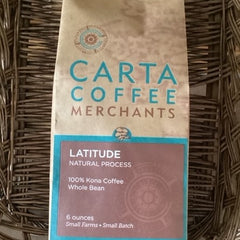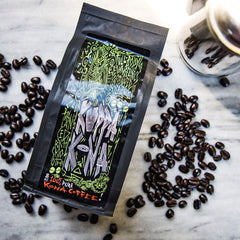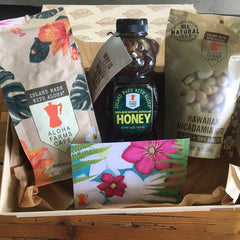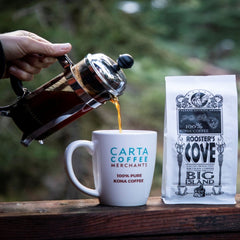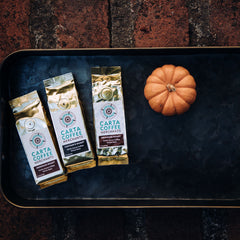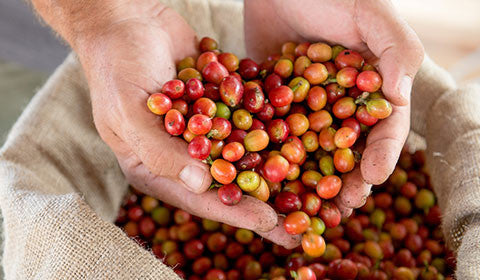Posted on

Warm breezes. Backyard BBQs. Bustling streets. That’s right. Summer has finally arrived!
Even down here at Nolyssa Farm in Kona, Hawaii where it rarely drops below 65 F, summertime simply brings an undeniable air that makes anyone want to slowdown, relax on a patio, and enjoy a cool, refreshing drink.
As unapologetic coffee fanatics, we can’t imagine anything more refreshing than sipping on a smooth, ice cold coffee. For years, this often meant a standard iced coffee, which is literally a traditionally prepared hot coffee poured over ice. Over the last few years though, there’s been a surge in popularity in an alternative method in creating a cooler coffee: the cold brew.
According to Bloomberg News, sales of cold brew coffee skyrocketed 80% between 2016 and 2017. It’s also expected to help boost the coffee industry as a whole, largely by creating a new possible stream of revenue altogether. In the U.S. alone, the cold brew industry is estimated to be worth about $2 billion—and growing.
In hopes of latching onto this unprecedented cold brew craze, baristas and aficionados alike have been seeking ways to further innovate the trendy beverage. Why not try to make cold brew better, and perhaps even more popular?
This is how the next stage in the cold brew stage was created. Nitro cold brew was first popularized around 2013 when it first clicked that nitrogen could be added to the keg-served coffee. Since then, the nitro cold brew quickly found a place in the increasingly mainstream world of chilled coffees.
So, what is the difference between cold brew and nitro cold brew coffee? How does a little bit of nitrogen make such a big difference, and what’s the deal with cold brew coffee in the first place?
What Is Cold Brew Coffee?
As you can likely guess from the name itself, cold brew coffee is brewed completely cold. Heat is never introduced throughout the entire process.
Typically, to make the cold brew coffee concentrate:
- Coffee grounds are placed in a container of chilled or room temperature water. If making cold brew at home, we highly suggest course coffee grinds to minimize excess bitterness. Choosing the perfect roast however is largely based on personal preference. Lighter roasts will evoke more acidity, whereas a darker roast will enhance the cold brew’s rich earthiness.
- It is then seeped for about 12–24 hours, depending on the taste you’re striving for. The longer it seeps, the stronger the flavor.
- After seeping, the brew is carefully filtered to eliminate all remaining coffee grounds.
- Store chilled in the refrigerator until ready to use.
- When you’re ready to drink your homemade brew, dilute the concentrate with water and/or milk 1:1 and enjoy.
Now you may be thinking “What’s the point? Can’t I just pour some hot coffee over ice and enjoy it right away?”
Sure, but then you’d be missing out on the beautifully heightened smoothness and lower levels of acidity created from the cold brewing process. This also makes cold brew an ideal coffee option for those with sensitive stomachs. It’s the heat that brings out much of coffee’s bitterness so never introducing it in the first place provides an unparalleled drinking experience.
Cold brew is also purposefully designed to be just that—cold. Pouring hot brew over ice will cause significant dilution of the coffee causing unintentional, watered down flavors. Letting your coffee sit out also increases oxidation and unpleasant flavors. If the taste of your coffee is important, it’s not even a competition.
How Is Cold Brew Served?
Though it is incredibly easy to make cold brew at home using a French press, or any other large glass container, most people are likely picking up their daily cup (or three) at a local coffee shop.
To keep the coffee nice and chill, cold brew coffee arrives at the shop in a metal keg and is served from a tap, much like beer. As cold brew became increasingly more popular across the country and baristas were seeking the perfect twist on making it even better.
With the brew already coming out of a tap, what could they add to enhance the experience? The answer: Nitrogen.
What is Nitro Cold Brew
Baristas began to infuse cold brew coffee with nitrogen in a fashion similar to beers like Guinness. As the cold brew is being poured from the tap, it’s pushed through a pressurizer and infused with nitrogen. The tiny bubbles aerate the cold brew, providing drinkers an incredibly silky mouthfeel and a creamy cup of coffee.
Watching a professional pour a glass is an experience in itself. As the drink fills, thousands of bubbles fizz upward creating a mesmerizing cascading effect. This ultimately results in the full, frothy head that tops this picture-perfect beverage.
The nitrogen also adds an increased sweetness and thickness to the brew which negates the need to add any sugar or milk for many. This means a lower-calorie treat without feeling like you’re missing out.
Another perk for caffeine fiends? Nitro cold brew will provide an even stronger jolt than even regular cold brew. The average 12 oz. cup of regular iced coffee contains about 120mg of coffee, the average cold brew around 200mg, and the average nitro cold brew close to 245mg.
For the best buzz, and the utmost in coffee drinking luxury, look no further than a nitro cold brew.
The Downsides
Like with anything, there are always downsides. The biggest one for cold brews and nitro cold brews are the prices. On average, they’ll both run you at least an extra dollar in comparison to traditional coffee drinks. This may not sound like much, but if you’re seeking a daily fix, it adds up.
In addition, they are more difficult to make at home. Though creating a DIY regular cold brew only really means planning in advance, few have the capabilities to put their coffee on-tap and infuse it with nitrogen.
Lastly, for those sensitive to caffeine, the extra rush might be too much. At most coffee shops, cold brew options are limited. This can make it trickier to control how much caffeine you’re drinking.
In short, just keep in mind that all nitros are cold brews, but not all cold brews are nitros. Cold brew coffee elevates chilled coffee to a new level. Nitro cold brew takes that even farther. Both will give you a smooth, delicious coffee experience that are simply perfect for a sunny, summer day.
Sit back, soak up that beautiful weather, sip some freshly poured cold brew, and enjoy.
Ready to make your own batch of delicious cold brew coffee? Trust the dedicated, family-run team at Carta Coffee Merchants. Made only from small-batch, hand-roasted beans, our exceptional 100% Kona coffee is perfect for developing the refreshing flavors desired in a cold brew.


